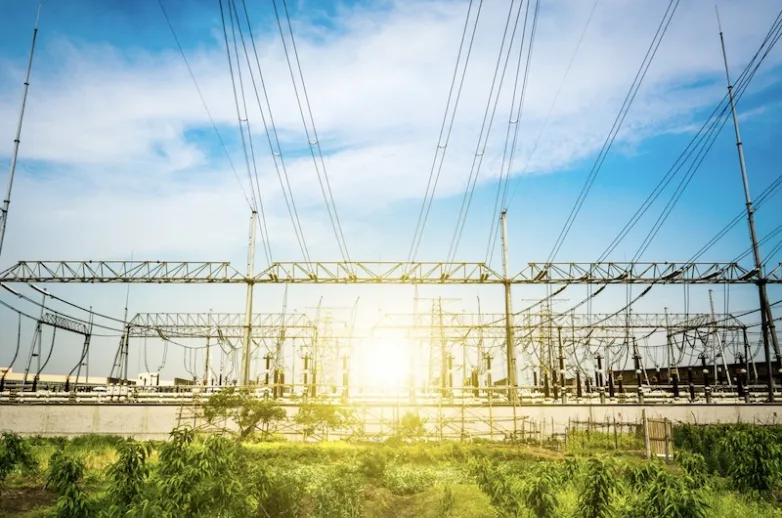Transforming Energy Distribution with Smart Grids

Emerging as a game-changer in the ever-changing world of energy distribution, smart grids are transforming power generation, distribution, and consumption. A more intelligent and integrated energy infrastructure is created by smart grids, which use modern technology instead of conventional power grids. The article dives into the primary concepts, advantages, and drawbacks of smart grids, which will surely change the way energy is distributed in the future.
Intelligent Integration of Technology
Using state-of-the-art technology is fundamental to smart grids since it allows for two-way communication between power generators and consumers. To track energy use, grid efficiency, and equipment status in real-time, advanced sensors, meters, and automation devices synchronize their efforts. Better load balancing, more informed decision-making, and enhanced grid resilience are all possible outcomes of this two-way communication.
A typical instance is the incorporation of weather APIs, which provide smart grids with real-time weather data that administrators may use to make judgments. By analyzing weather patterns using these APIs, grid operators may improve system resilience, optimize load distribution, and adapt to changes in renewable energy generation.
Enhanced Grid Monitoring
Thanks to smart grids, utilities can now monitor and operate the grid more accurately than ever. Operators can quickly react to any problems, pinpoint inefficiencies, and discover errors with the use of sensors and remote monitoring equipment. A more dependable and robust energy infrastructure results from this preventative measure, which lessens the likelihood of outages and downtime.
Integration of Renewable Energy Sources
A key function of smart grids is the smooth integration of renewable energy sources into the grid, which is becoming more critical as the demand for clean energy increases. Power from renewable sources, such as solar and wind, can be successfully controlled using real-time modifications and improved forecasts. A more sustainable and low-carbon energy mix could be fostered by using smart grids, enabling the system to handle more renewable energy.
Energy Efficiency and Demand Response
Smart grids enable users to take an active role in managing energy use through demand response programs. Users can help maintain grid stability and load balancing by adjusting their use during peak hours based on real-time information about power costs and consumption trends. Furthermore, smart grids enhance energy efficiency by detecting and mitigating transmission and distribution losses.
Grid Resilience and Self-Healing
Smart grids demonstrate their resilience and self-healing skills when confronted with incidents such as natural catastrophes or unanticipated instances. Automated systems can swiftly detect and isolate problems to minimize interruptions, rerouting energy throughout the process. In addition to improving dependability, this function also helps to cut down on downtime, which results in a more robust reaction to any crises that may arise.
Successful Examples
United States: When it comes to smart grid technology, the US was an early adopter. Smart grid projects have been put in place by cities like Chattanooga, Tennessee, and Austin, Texas. These initiatives include demand response programs, distribution automation, and advanced metering infrastructure (AMI).
Japan: Smart grid technology has been a part of Japan's recovery efforts after the nuclear tragedy at Fukushima. Yokohama is one of many Japanese cities that has launched smart grid initiatives, focusing on demand-side management, distributed power sources, and system resilience.
Australia: Melbourne and Sydney are two of the several Australian cities that have launched smart grid projects. Renewable energy integration, grid reliability enhancement, and empowering consumers via real-time data and control are the main goals of these initiatives.
Challenges
Although smart grids have a number of advantages, they are not without their share of difficulties and security concerns. Cybersecurity concerns are also raised as a result of the increasing connectedness. One of the most important things that can be done to protect the security and reliability of the energy infrastructure is to protect smart grids from cyber-attacks. Comprehensive cybersecurity procedures and security measures are necessary to protect against possible vulnerabilities.
A Sustainable Future
In the pursuit of a sustainable energy future, smart grids are an essential step that must be taken to achieve a future that is both productive and environmentally friendly. Smart grids provide a means to achieve a more robust, responsive, and environmentally conscious energy distribution system. This is accomplished through technology to improve grid intelligence, monitor performance, and include renewable energy sources. Even though the need for energy worldwide is constantly shifting, the smart grid revolution is a shining example of innovation that leads us to a future in which energy distribution is intelligent and environmentally friendly.
Also read
- How to Reduce Downtime in Solar Operations?
- Hyperparameter Tuning Good Practices for Robust Predictive Models
- 5 Critical Metal Forming Processes in Solar Panel Manufacturing
- Maximizing Efficiency with Low-Maintenance Solar Panel Systems
- Cyber Hygiene for Solar Companies: Protecting Your Data from Email Threats


